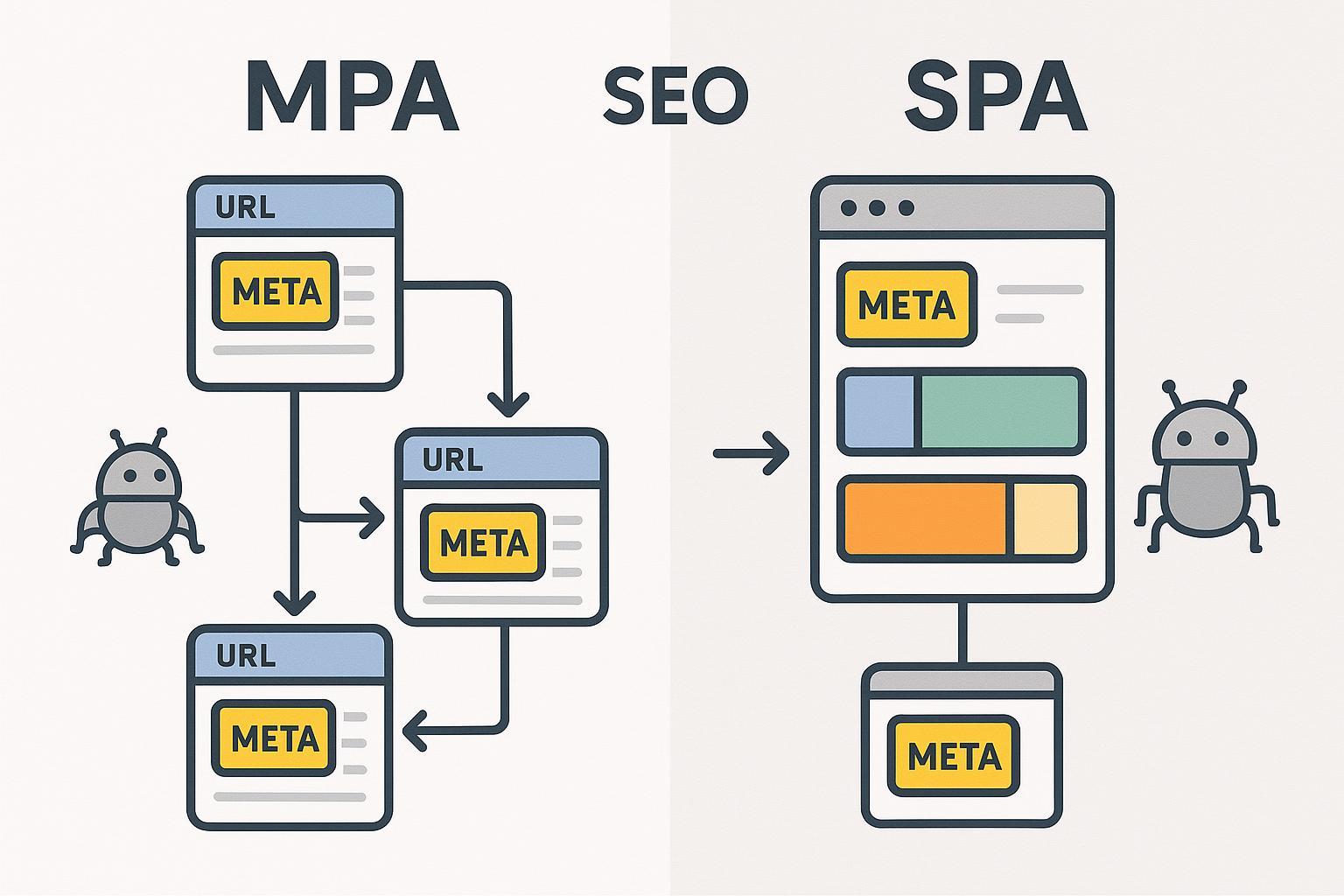What Is an MPA? The SEO Power of Multi Page Applications Explained

When building a content-rich website or SaaS platform, choosing the right architecture—MPA or SPA—can make or break your organic search visibility. For marketers and business owners aiming for long-term SEO impact, understanding these choices isn’t just technical jargon: it’s the foundation of discoverable, fast-growing content.
What Is an MPA (Multi Page Application)?
A Multi Page Application (MPA) is a website structure where every page is a separate HTML document, server-rendered, each with its own unique URL and set of metadata.
Each section or content type lives at its own address, fully loaded from the web server.
Meta tags, sitemaps, analytics, and schema markup can all be configured for every single page.
This architecture is especially well-suited for blogs, news sites, large corporate domains, and SEO-driven SaaS platforms.
Reference: Wezom MPA Definition
How MPAs Work (Technical Principles, Plainly Stated)
When a visitor clicks a link, the browser loads a new, standalone web page from the server.
Each page is a full HTML document—no tricky dynamic content loading required.
This gives search engines like Google easy, direct access to index each individual piece of content, with all relevant meta data visible on load.
Why does this matter for SEO? Crawlers can discover, scan, and rank each page independently. You control every URL, every meta tag, and all structured data—without special tricks or workarounds.
Reference: Ramotion SPA vs MPA Guide
MPA vs SPA: SEO Comparison Table
Feature | MPA | SPA |
|---|---|---|
URL Structure | Every page gets its own URL | Usually a single URL for most views |
Meta Data Control | Full control on every page | Complex, often JS-only |
Server-Side Rendering | Native/default | Requires advanced setup |
Indexability | Excellent, out-of-the-box | Needs workarounds/SSR/dynamic API |
Deep Linking | Simple and robust | Often requires extra routing |
Page Analytics | Transparent, page-level | Needs custom tracking |
SEO Scalability | Effortless for large sites | Challenging for huge content trees |
In summary: MPA enables straightforward, granular SEO optimization. SPA delivers modern in-app experiences, but out-of-the-box struggles with discoverability unless engineered specifically for SEO.
Common Myths & Practical Takeaways
Myth: SPA is always ‘better’ or equally SEO-friendly because it’s modern.
Reality: SPAs often rely on JavaScript to load main content, which can be invisible to search engines unless you implement server-side rendering or pre-rendering—adding development overhead and complexity. MPA is naturally search-friendly with no extra steps required.
Myth: Google always indexes all SPA content just like MPA.
Reality: Googlebot has improved, but dynamic SPA content (especially behind navigation or tabs) may be missed or not indexed as efficiently. MPAs deliver all content to crawlers in ways search engines expect.
Where Is MPA Best Used? Real-World Examples
Blogs and News Sites: Structured articles, easy sharing, deep archives (e.g., WordPress, NYTimes.com)
Ecommerce Platforms: Every product and category page can shine in organic search (e.g., Amazon, eBay)
SaaS Platforms and Knowledge Bases: Documentation and feature pages grow SEO footprint at scale
Best Practice Checklist:
Assign clear, unique URLs to every major content type
Configure meta title, description, and schema markup for each page
Use a logical, hierarchical site map and internal linking structure
Update content via server-rendered pages for fast indexing
Related Concepts Glossary
SPA (Single Page Application): Loads once, then swaps content dynamically. Needs special SEO handling.
PWA (Progressive Web Application): Adds app-like features to MPA or SPA—offline use, installs, etc.
Server-Side Rendering (SSR): Renders SPA content on the server before sending to users/crawlers, making SPAs more SEO-friendly.
Dynamic Rendering: Serves content differently to crawlers and users, helping SPA/JS sites get indexed.
Conclusion
For content-driven businesses, MPAs offer unbeatable SEO advantages: comprehensive indexing, robust meta management, and scalability for future growth. While SPAs have their place, the path to reliable organic discovery is far simpler and surer with an MPA architecture. If search performance and discoverability drive your platform’s success, MPA is the proven, low-friction choice.
Apply these principles as you plan your next website—and unlock the visibility your content deserves.

